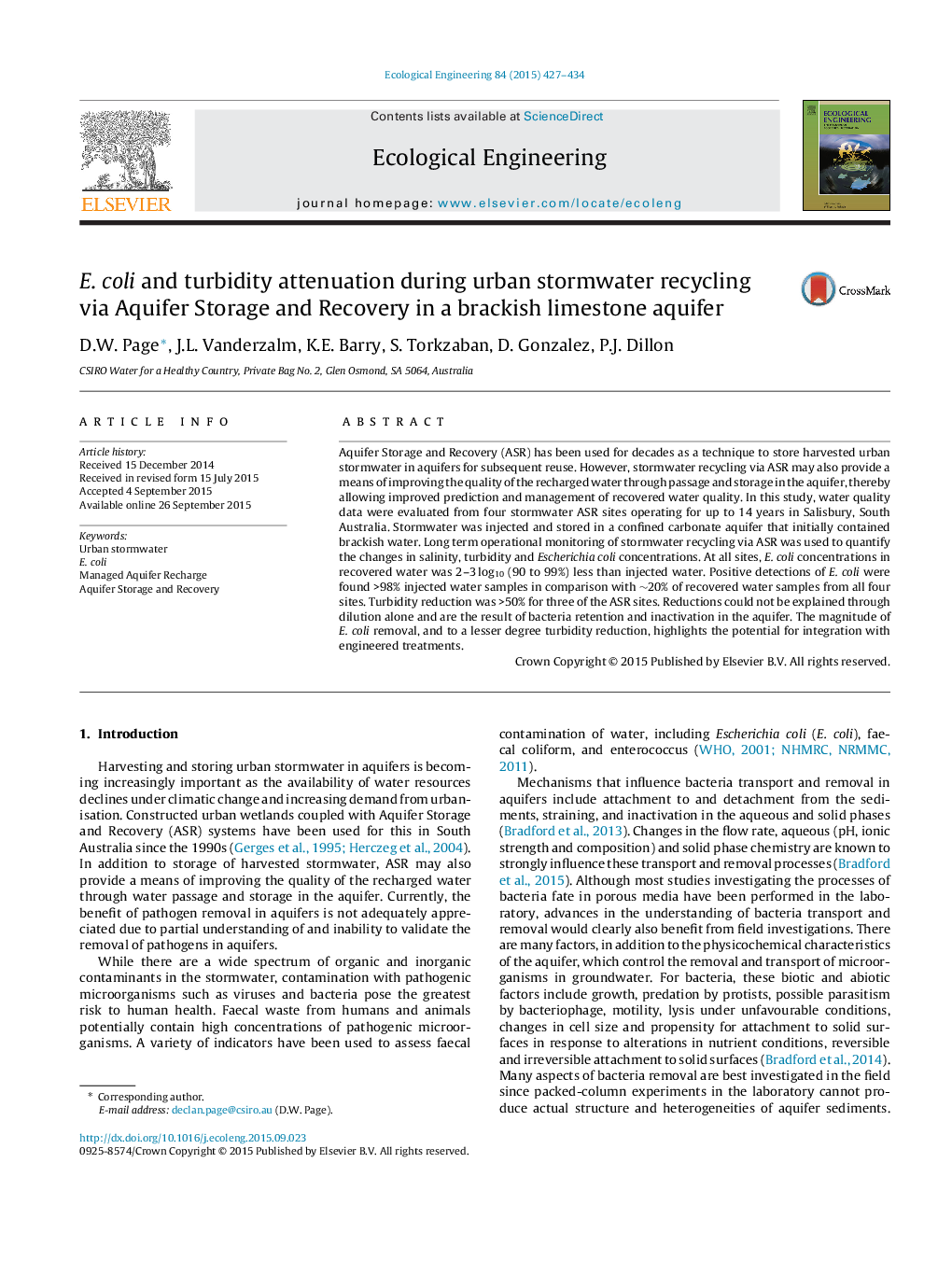| Article ID | Journal | Published Year | Pages | File Type |
|---|---|---|---|---|
| 4388811 | Ecological Engineering | 2015 | 8 Pages |
Aquifer Storage and Recovery (ASR) has been used for decades as a technique to store harvested urban stormwater in aquifers for subsequent reuse. However, stormwater recycling via ASR may also provide a means of improving the quality of the recharged water through passage and storage in the aquifer, thereby allowing improved prediction and management of recovered water quality. In this study, water quality data were evaluated from four stormwater ASR sites operating for up to 14 years in Salisbury, South Australia. Stormwater was injected and stored in a confined carbonate aquifer that initially contained brackish water. Long term operational monitoring of stormwater recycling via ASR was used to quantify the changes in salinity, turbidity and Escherichia coli concentrations. At all sites, E. coli concentrations in recovered water was 2–3 log10 (90 to 99%) less than injected water. Positive detections of E. coli were found >98% injected water samples in comparison with ∼20% of recovered water samples from all four sites. Turbidity reduction was >50% for three of the ASR sites. Reductions could not be explained through dilution alone and are the result of bacteria retention and inactivation in the aquifer. The magnitude of E. coli removal, and to a lesser degree turbidity reduction, highlights the potential for integration with engineered treatments.
